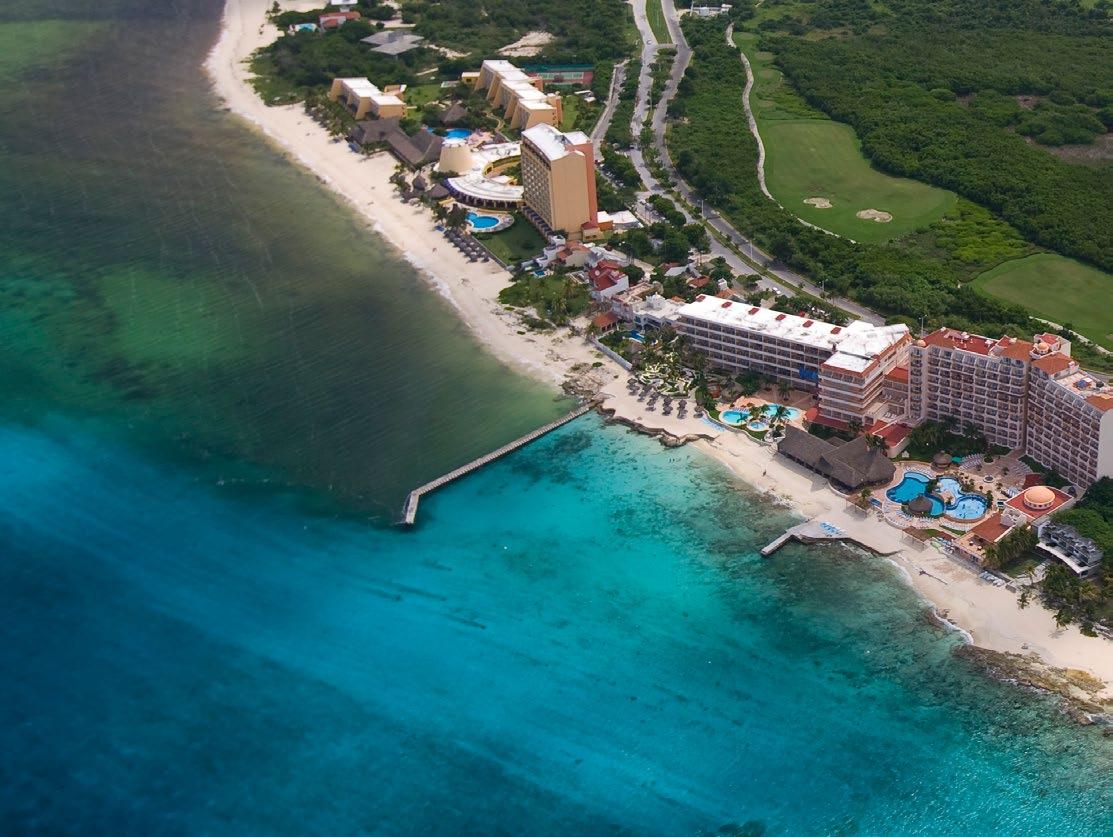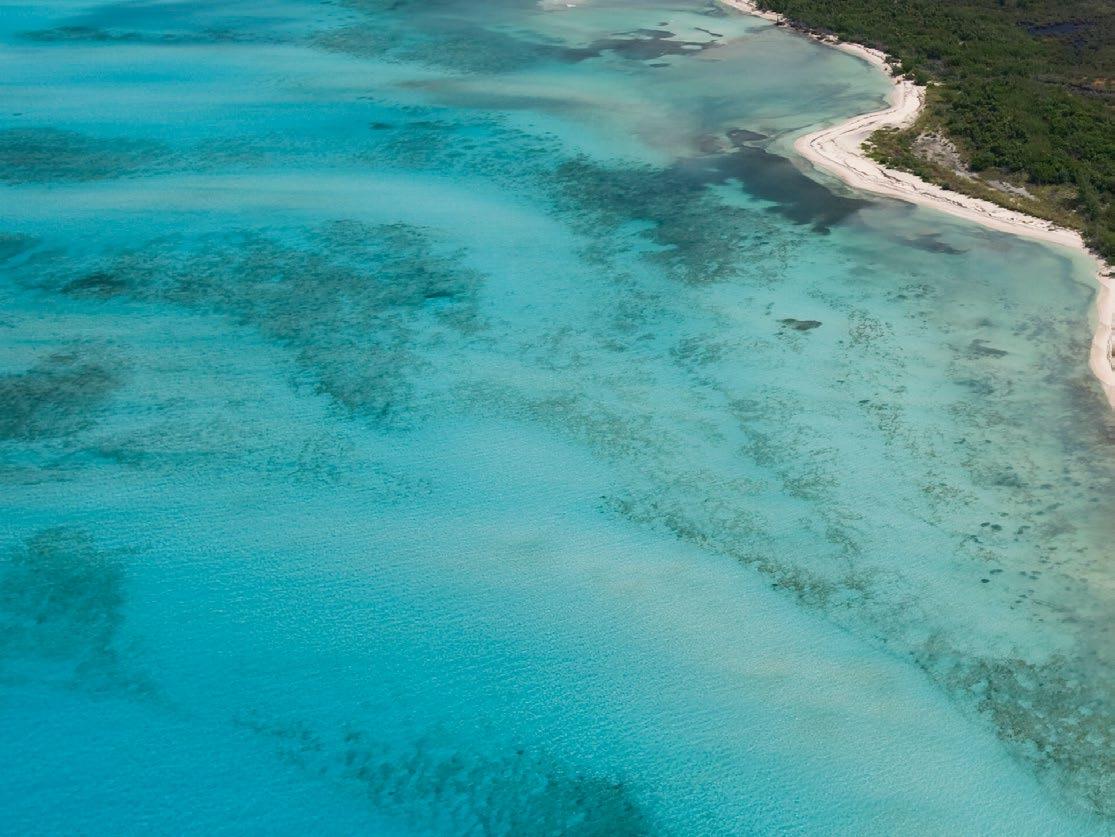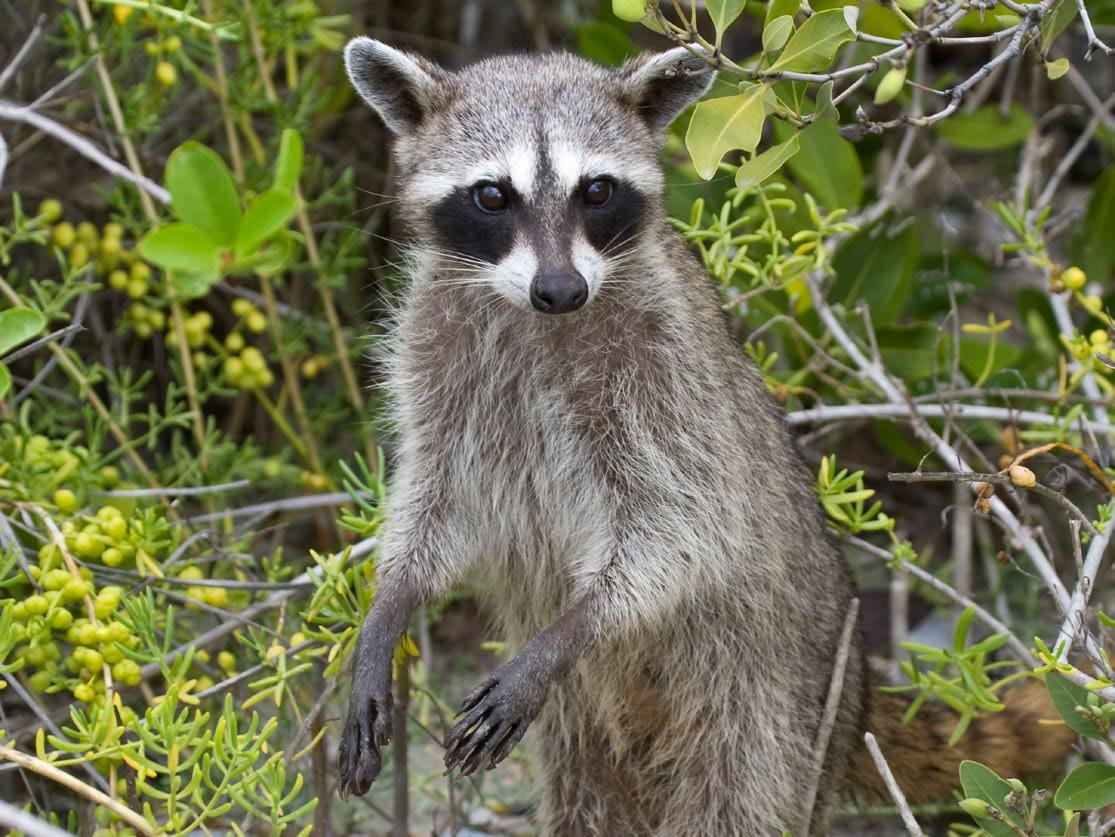
8 minute read
La isla de las golondrinas
Por Gonzalo Merediz Alonso
Amigos de Sian Ka’an
Advertisement
ACozumel se le conoce como la isla de las golondrinas. Ello quizás se debe a que su ubicación y su extensión la hace apropiada para la llegada de estas aves durante su migración, cada invierno, desde Norteamérica. Por eso Cozumel tiene un valor internacional como refugio para la biodiversidad. Sin embargo, su valía es mucho mayor. La más grande isla de nuestro país alberga a 31 especies y subespecies de animales endémicos, es decir, que se encuentran ahí y en ningún otro lugar del mundo. El más famoso es el mapache enano, popular entre los visi tantes en el norte insular. Sin embargo, también hay un pecarí o jabalí de collar, un tejón, también llamado coatí, un zorrillo, una lagartija, un par de ratones, el colibrí esmeralda, y un víreo, por mencionar solo algunos. Una de las especies endémicas más emblemáticas es el cuitlacoche de Cozumel. Se trata de un ave que posiblemente se ha extinguido ya. Dejó de observarse a finales de los años 80, después del paso del huracán Gilberto. Se reportaron algu nos registros a fines de los años 90 y principios de los 2000, sin embargo, desde del embate del huracán Wilma, en 2005, no ha vuelto a encontrarse ningún ejem plar. Tendrían que pasar otros 33 años para que se cumpla el plazo de 50 sin que haya registro alguno de la especie, para que se declare su extinción. De ocurrir, la biodiversidad de la isla, de México y del mundo, perdería a una de las primeras aves víctimas del cambio climático en nuestro país. Se considera que la fuerza de los dos huracanes mencionados arrasó con los sitios de anidación y alimentación de los pocos especímenes que quedaban, haciendo aún más difícil su sobreviven cia. Como bien sabemos, el cambio climático ha incrementado notablemente la fuerza y frecuencia de los huracanes.


La presencia de esos animales únicos en el planeta, y de muchos otros más, ocurre gracias a que Cozumel aún está cubierto en su mayor parte por selvas y manglares sanos. Esa vegetación confiere a la isla su belleza espectacular, contribuye a capturar dióxido de carbono y, por lo tanto, a mitigar el cambio climático. Por si fuera poco, los habi tantes y visitantes de este que es el principal destino de cruceros del mundo dependen de sus selvas para recargar los acuíferos que abastecen de agua a decenas de miles de familias, a los hoteles, restaurantes e instalaciones portua rias. Esa misma agua subterránea desemboca en el Caribe, manteniendo con vida, o llevándole la contaminación de las aguas residuales mal tratadas, al arrecife de coral cuya salud no es poca cosa. Cozumel es una de las capitales mundiales del turismo de buceo. Millones de personas practican este deporte para gozar del colorido y la riqueza de vida de los arrecifes, dejando una cuantiosa derrama económica para los isleños. Afortunadamente, la sociedad cozumeleña, desde hace años, ha tomado medidas para proteger su patrimonio na tural y, por tanto, económico. La totalidad de sus arrecifes, así como una buena parte de sus costas están incluidos dentro de áreas naturales protegidas federales. La mayoría de sus selvas del interior, donde se encuentran los pozos de agua potable, están dentro de un área protegida estatal. Además, la UNESCO reconoce a Cozumel como una Reserva de la Biosfera por su relevancia global. Todas ellas, ligadas a las zonas arqueológicas, como la de San Gervasio, y a las tradiciones vivas en la ciudad y en el Cedral, son una oportu
nidad extraordinaria para que Cozumel diversifique su ofer ta a través del turismo de naturaleza y cultura. Manejado adecuadamente, y aprovechando los millones de cruceristas que llegan cada año, ese turismo alternativo podría dejar a Cozumel ingresos millonarios sin tener que abrir nuevos muelles o sobre densificar su costa con enormes hoteles.
Si Cozumel logra consolidar la proyección de sus selvas y manglares, diversificar su turismo con una oferta redituable, pero de baja densidad, reducir la construcción de gran in fraestructura, y devolver a la naturaleza las aguas residuales limpias, será uno de los principales ejemplos de desarrollo sustentable en todo México. El arraigo y cariño que los cozumeleños tiene por su maravillosa isla seguramente lo harán posible.
Crédito de fotos: ILCP/ASK; G. Merediz
www.amigosdesiankaan.org


The island of the swallows
By Gonzalo Merediz Alonso
Amigos de Sian Ka’an
Cozumel is known as the island of swallows. This is perhaps because its location and extent make it suitable for the arrival of these birds during their migra tion, each winter, from North America. That is why Cozumel has an international value as a refuge for biodiversity. However, its value is much greater. The largest island of our country is home to 31 species and subspecies of endemic animal sors, that is, they are found there and in no other lugar in the world. The most famous is the dwarf raccoon, popular with visitors in the insular north. However, there is also a peccary or collared boar, a badger, also called coati, a skunk, a lizard, a pair of mice, the emerald hummingbird, and a vireum, to mention just a few. One of the most emblematic endemic species is the Cozumel cuitlacoche. It is a bird that has possibly already become extinct. It ceased to be observed at the end of the 80s, after the passage of Hurricane Gilberto. Some records were reported in the late 90s and early 2000s, however, since the onslaught of Hurricane Wilma, in 2005, no specimen has been found. It would take another 33 years for the 50 years to be met without any registration of the species, for its extinction to be declared. If it happens, the biodiversity of the island, Mexico and the world, would lose one of the first birds victims of climate change in our country. It is considered that the strength of the two hurricanes mentioned wiped out the nesting and feeding sites of the few remaining specimens, making their survival even more difficult. As we well know, climate change has significantly increased the strength and frequency of hurricanes.


The presence of these unique animals on the planet, and many others, occurs thanks to the fact that Cozumel is still mostly covered by healthy jungles and mangroves. This ve getation gives the island its spectacular beauty, contributes to carbon dioxide capture and, therefore, to mitigate climate change. As if that were not enough, the inhabitants and visi tors of this main cruise destination in the world depend on its jungles to recharge the aquifers that supply water to tens of thousands of families, hotels, restaurants and port facilities. That same groundwater flows into the Caribbean, keeping ali ve, or carrying pollution from poorly treated sewage, to the coral reef whose health is no small feat. Cozumel is one of the world capitals of diving tourism. Millions of people practi ce this sport to enjoy the color and richness of life of the ree fs, leaving a substantial economic spill for the islanders. Fortunately, Cozumel society, for years, has taken measures to protect its natural and, therefore, economic heritage. All of its reefs, as well as a good part of its coasts are included within federal protected natural areas. Most of its inland forests, where drinking water wells are located, are within a state protected area. In addition, UNESCO recognizes Cozumel as a Biosphere Reserve for its global relevance. All of them, linked to archaeological sites, such as San Gervasio, and the traditions alive in the city and in El Cedral, are an extraordinary opportunity for Cozumel to diversify its offer through nature and culture tourism. Properly managed, and taking advantage of the millions of cruise passengers who arrive each year, this alternative tourism could leave Cozumel millionaire income without having to open new docks or densify its coast with huge hotels.
If Cozumel manages to consolidate the projection of its jun gles and mangroves, diversify its tourism with a profitable offer, but of low density, reduce the construction of large in frastructure, and return clean wastewater to nature, it will be one of the main examples of sustainable development throu ghout Mexico. The roots and affection that the Cozumeleños have for their wonderful island will surely make it possible.
Photo credit: ILCP/ASK; G. Merediz www.amigosdesiankaan.org











